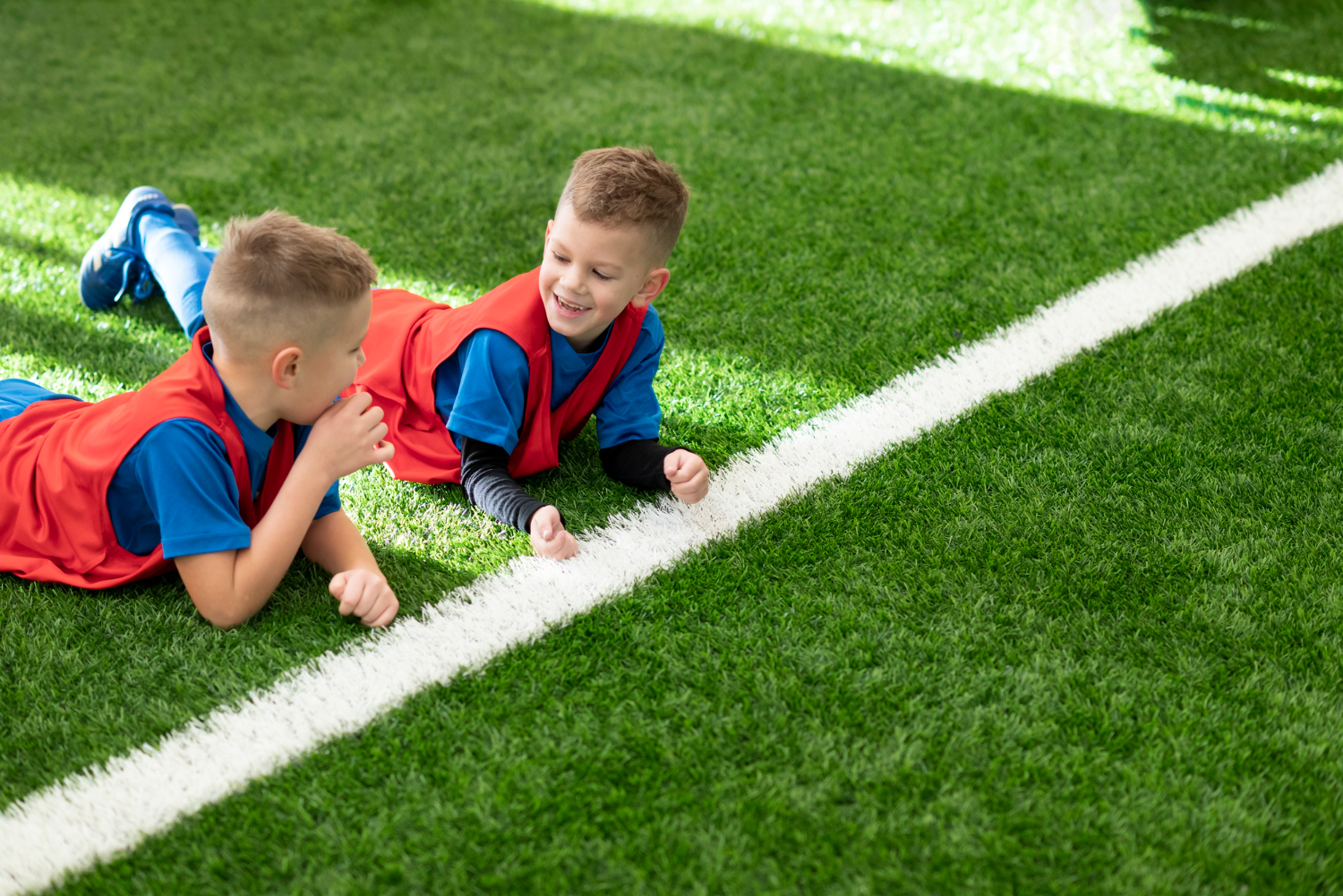
Many parents worry about the safety of artificial grass for their children. These concerns often come from outdated information and common misunderstandings. This article examines the most common myths surrounding synthetic turf safety. Collaborating with a trusted general contractor can help ensure proper installation and adherence to safety standards. We’ll examine chemical exposure, heat issues, allergies, bacteria, and how artificial grass impacts children’s play and the environment.
Chemical Exposure Concerns
Parents often worry about chemicals in synthetic turf that might harm their children. Some older synthetic turf products contained harmful substances, including lead and phthalates. Today’s high-quality artificial grass is much safer. Look for products that meet safety standards and are compliant with Proposition 65. Select turf with non-toxic infill materials to minimize chemical risks. Read the product details and ask suppliers about the materials used. Modern synthetic turf manufacturers prioritize child safety and utilize safer materials in their products.
Heat Retention Misconceptions
Many people think artificial grass gets too hot for children to play on safely. This isn’t true for quality products. Here are the facts about heat:
- Infill Materials: Modern artificial grass uses special infill that helps cool the surface
- Cooling Technology: Some products have built-in cooling features to control temperature
- Heat Reflective Properties: Good artificial grass reflects heat instead of absorbing it
- Shade and Water: Adding shade or a light water spray keeps surfaces cool
Quality artificial grass, properly installed, stays at a safe temperature for children’s play.
Allergy and Irritation Myths
Some parents believe that artificial grass can cause allergies and skin problems. This belief comes from old information about poor-quality products. Modern artificial grass is hypoallergenic and doesn’t produce pollen like natural grass. This makes it great for children with grass allergies. Today’s synthetic turf is soft and gentle on skin. It won’t irritate when children play on it. High-quality artificial grass can actually reduce allergy problems compared to natural grass, which can trigger reactions.
Bacterial Growth on Artificial Grass
Parents sometimes worry about bacteria growing on artificial grass. With proper care, this isn’t a real problem. Here’s what prevents bacterial growth:
- Regular Maintenance: Simple cleaning routines stop bacteria from building up
- Drainage Systems: Good drainage prevents water from sitting and creating breeding spots
- Antimicrobial Treatments: Many artificial grass products include germ-fighting treatments
- Choosing Quality Materials: Better artificial grass resists bacteria growth naturally
Regular maintenance keeps artificial grass clean and safe for children.
Impact on Children’s Play and Safety
Artificial grass actually makes play areas safer for children. It provides a consistent, soft surface that reduces the risk of falls-related injuries. The cushioning effect protects children better than hard surfaces or uneven natural grass. Artificial grass removes the need for harmful pesticides and fertilizers that can hurt children. It drains well, preventing slippery mud puddles that cause accidents. High-quality artificial grass, when properly installed, creates a safer play space while providing children with a clean, comfortable area to enjoy.
Environmental Impact of Artificial Grass
Artificial grass has positive effects on the environment in several ways:
- Water Conservation: No watering needed, saving thousands of gallons yearly
- Chemical Usage: No pesticides or fertilizers required, protecting groundwater
- Durability: Lasts many years without replacement, reducing waste
- Carbon Footprint: Initial manufacturing impact is offset by long-term water and chemical savings
These benefits make artificial grass an environmentally smart choice for families.
Related Topics:
